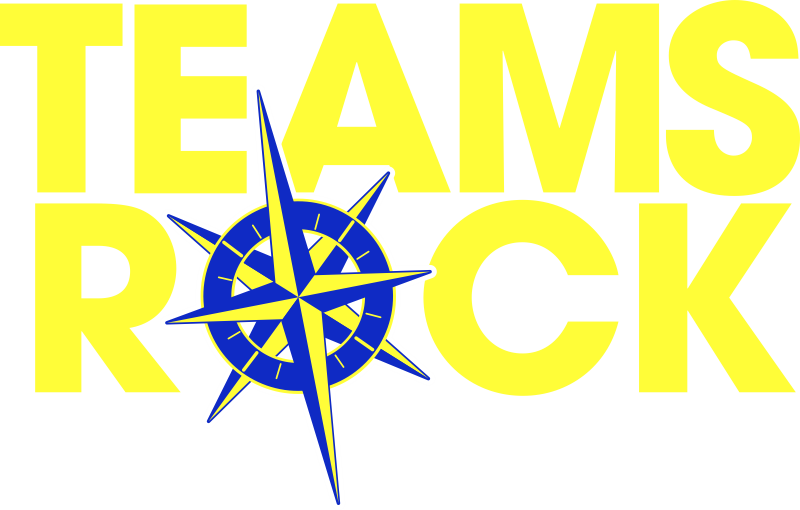Most organizations have a vision statement, but it is often unknown to employees outside of senior management. I believe that each and every team within an organization should have a vision statement. It must be congruent with that of the overall organization, yet still be different enough that it truly becomes a vision for the team. This is a critical step in developing a strong and successful team culture.
When the team has a vision statement, it becomes the context for decision making at all levels of the team. This is critical in the development of mutual accountability, a vital area of teamwork.
 Ted’s project management team had a vision statement for a couple of years and, while they had it on their security access badge, no one could recite the statement much less explain what it truly meant. When Susan became the new leader of the project team, she read the vision statement and thought it was nice but, when she found no one knew it, she had an idea. After taking a few weeks to learn about the members of her new team, Susan invited Ted into the office and asked if he was interested in taking the lead on a special project. He responded with a confident, “Yes.”
Ted’s project management team had a vision statement for a couple of years and, while they had it on their security access badge, no one could recite the statement much less explain what it truly meant. When Susan became the new leader of the project team, she read the vision statement and thought it was nice but, when she found no one knew it, she had an idea. After taking a few weeks to learn about the members of her new team, Susan invited Ted into the office and asked if he was interested in taking the lead on a special project. He responded with a confident, “Yes.”
Susan briefed Ted on what he would do and why she chose him. Susan told Ted she wanted someone the team could relate to and not feel uncomfortable with, since she was the “new boss.” Susan outlined to Ted the following steps for developing a powerful and sustainable vision statement:
- Have a specific meeting and gain input from everyone on the team. That includes:
- What does this team add to the overall team and organization?
- Who are our stakeholders?
- How does our team do this better than anyone else?
- What are the strengths and weaknesses of our team?
- The next step is to let the team talk amongst themselves about this and allow the ideas to settle in for some discussion.
- After a few days, have another meeting to discuss the ideas and get thoughts from everyone. Here is where you begin to write out a draft of your vision statement. This step is one of those that the team will go back and forth with several times and it may take a couple of meetings to come up with a final version. After each draft is written, let the team take it and work with it and see if they want to make changes. Take every thought into consideration.
This process is critical – here is where you will see actual team development occur. Each person will have opinions and discussion is valuable to getting the team through the STORMING phase of team development. They will likely find problems with someone’s idea and they will have to problem-solve amongst themselves. Little interference from management will go a long way here.
- Write out the final version of the vision statement. Once this is done, many organizations stop. Big mistake. You need to keep going. Doing this will put your team ahead of over 90% of the smaller teams in the United States. If you want to make a serious impact on your organization, the next two steps are VITAL!
- Once the statement is printed, have everyone sign it. I would also encourage you to have the management team sign the statement at the bottom signifying that they are there to support the team.
- Give copies to everyone on the team. Post copies in work areas, on security access cards, etc. Regardless of how you do this, get copies out to everyone on the team.
In essence, this is a brain storming session. This is where those who are more outgoing may need to be tamed slightly or encouraged to help bring out responses from those who are less outgoing. A key point is not to evaluate any of the ideas that come up. Just write them all down and move on to the second step.
Now, getting a vision statement is great and, while it is a significant step in the teaming process, it is not enough to just have a vision statement. The real secret to the process is to have the statement become second nature for everyone. This may mean that you have to read it regularly at staff meetings. Recognize anyone demonstrating the vision through the workday. Also address those occasions when the team is not working towards the vision.
As her team’s leader, Susan was even able to use their team’s vision statement in performance evaluations and it helped in getting everyone to hold each other accountable for their actions. Remember, if the vision statement is used and recognized, it will become the context for decisions made by team members. Then, when poor decisions happen (and they will), always remember that it is about what goes wrong and not who messes up.
This statement should be reviewed annually (at a minimum), especially if new members join the team. They will quickly feel like they are not part of the clique and this can be a situation for disaster if they are not brought into the concept of teamwork fast enough. Likewise, if they are brought into the team mix effectively, the team will hardly miss a beat.
Photo by Kate Ter Haar


Leave A Comment